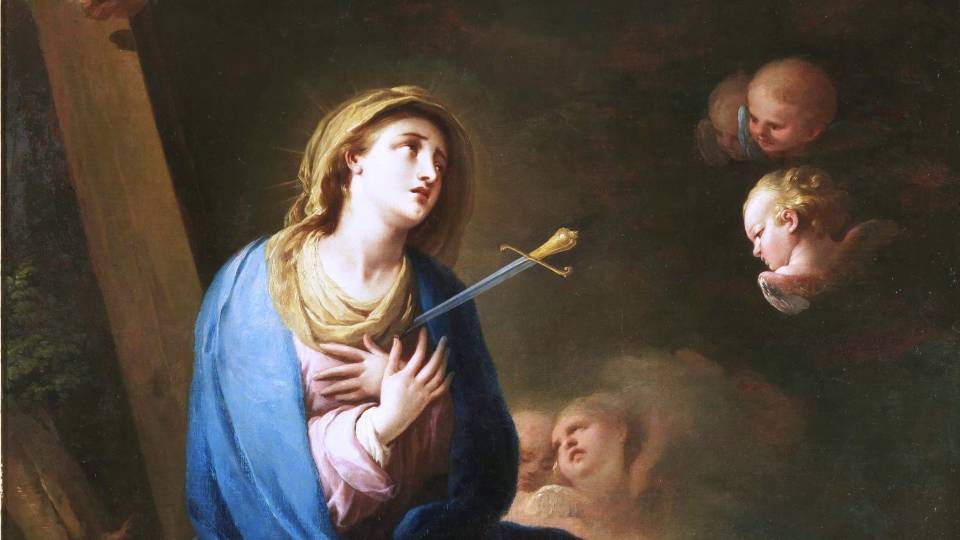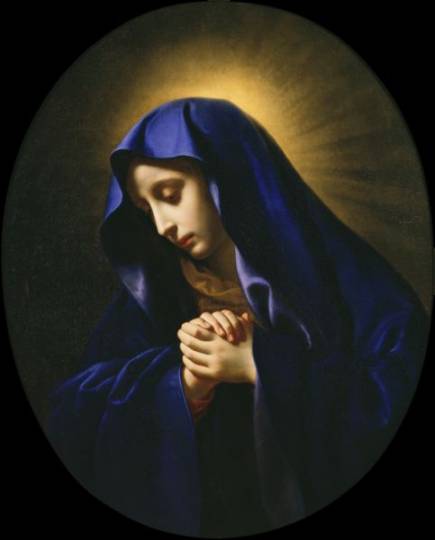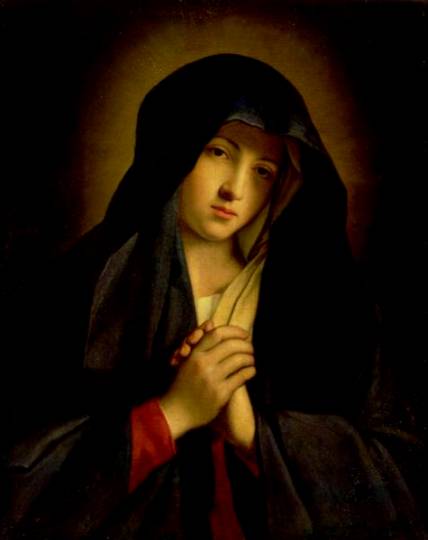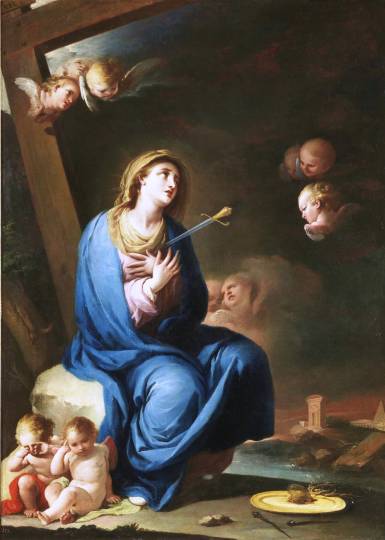Grief divine: A reflection on Our Lady of Sorrows
Scott Harris
Thursday, September 12, 2019

There is something about the Blessed Virgin Mary under the title of Our Lady of Sorrows that has always appealed to me. Since I started seriously considering being received into the Catholic Church around 2015, I feel that she has been a constant and comforting presence. The devotion to the Mother of God was one of the aspects of the Catholic faith that initially drew me to the Church, as I felt that Catholicism had the greatest appreciation for her, and the fullest understanding of her importance. It seemed like a good sign that the church where I started attending Catholic Mass regularly, and would eventually be officially received into the Church, would be under the patronage of Blessed Mary as Our Lady of Sorrows. Another personal connection was that the feast day of Our Lady of Sorrows is two days after my birthday, which gave me even more of a sense of an affinity for her under this title. September is a special month when it comes to the Blessed Virgin Mary, as the feast of her own nativity is celebrated on the 8th, exactly nine months after the Feast of the Immaculate Conception on December 8th, when tradition holds that Our Lady was conceived without inheriting the stain of original sin. One week after the Feast of the Nativity of the Blessed Virgin Mary, she is honoured as Our Lady of Sorrows, the compassionate mother lamenting for her crucified Son and our Redeemer. From her, the Word of God took flesh, and that flesh had been nailed to a cross. It is no wonder that sorrow pierced her own soul when her divine Son was crucified, making her a martyr without dying.O Virgin Mother of God, He whom the whole world doth not contain, beareth this punishment of the cross; He the author of life made man.
(From the gradual for the Feast of the Seven Sorrows of the Blessed Virgin Mary)


Virgin of all virgins best, Listen to my fond request: Let me share thy grief divine.
(From the Stabat Mater)

Related Articles:
Category: Programming
My Manresa Story: Resting a While
Monday, February 24, 2025
 Gianpaolo Capozzi
Gianpaolo Capozzi
At the Manresa Spiritual Renewal Centre in Pickering, ON, retreatants of all ages can encounter a God of surprises.
Consistory for the Creation of New Cardinals 2024
Friday, December 6, 2024
 Salt + Light Media
Salt + Light Media
On December 7, Pope Francis will hold a consistory for the creation of new Cardinals. Then on December 8, the Solemnity of the Immaculate Conception, he will preside over a Holy Mass of Thanksgiving with the new Cardinals.
How To Stay Awake During The Gospel Readings
Thursday, March 21, 2024
 Joseph McCullough
Joseph McCullough
As most longtime Catholics know, it’s easy to hear the Gospels repeatedly preached on Sundays, but not to understand, remember, or (consequently) truly value any of what you’d just heard.
Euthanasia is rapidly expanding: How can we respond?
Friday, January 26, 2024
 Julian Paparella
Julian Paparella
Euthanasia is becoming accessible to an increasing number of Canadians. What should we know about these changes?
Looking back on 20 years with Salt + Light Media and Thomas Aquinas College
Monday, December 11, 2023
 Mary Rose Bacani Valenti
Mary Rose Bacani Valenti
Twenty years ago, I was at a crucial point in my life. In 2003, I graduated from college and I began my Salt + Light Media career.













